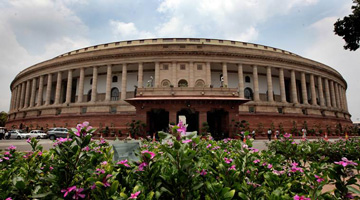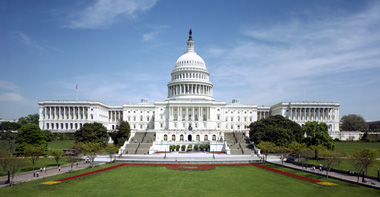The Trump and Modi Show
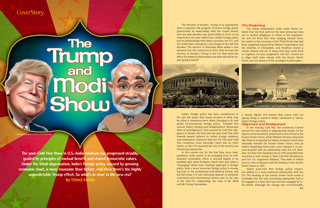
(Left) Trump’s caricature courtesy of DonkeyHotey.
The post-Cold War thaw in U.S.-India relations has progressed steadily, guided by principles of mutual benefit and shared democratic values. Under the Modi dispensation, India’s foreign policy, buoyed by growing economic clout, is more muscular than before. And then there’s the highly unpredictable Trump effect. So what’s in store in the new era?
The election of Donald J. Trump is an appropriate time to examine the progress of India’s foreign policy (particularly its relationship with the United States) over the past decades and, particularly, to focus on its trajectory in the new millennium. India’s foreign policy and its relationships with Asian countries, the U.S., and the world have undergone a sea change in the last two decades. The election of Narendra Modi added a new dynamic into the continuum in 2014. Now we have the election of Donald J. Trump in the U.S. How does this affect the bilateral relationship and what should we expect going forward?
India’s foreign policy has been transformed in the last few years, after many decades of what may be called a consensus (even when changing to fit new global circumstances) foreign policy, founded first around India’s shining post-independence Nehruvian ideal of nonalignment, then around its Cold War allegiance to Russia. We then had the post-Cold War shift towards greater balance in Indian foreign relations, and subsequent closeness with the U.S. The post-Cold War consensus came naturally—there was no other option, as the U.S. assumed the role of the world’s sole remaining superpower.
In the current era, for the first time since independence, India seems to be emerging from its selfimposed constraints, when it seemed largely to be satisfied with what Professor Harsh Pant has called a “managing” rather than “leading” approach to foreign policy. Now, a more muscular foreign policy is emerging both in the multilateral and bilateral arenas, and the full scope of it will ultimately depend on domestic constraints and international events, and, in the case of the Indo-U.S. relationship, the roles of Mr. Modi and Mr. Trump themselves.
The Beginning
The newly independent India under Nehru believed
that the best path for the new democracy was
not to declare allegiance to either of the superpowers
and the blocs that were shaping around them,
but rather to the countries of the Third World that had
been negatively impacted by Western imperialism and
the shackles of colonialism, and therefore shared a
certain history and set of issues that they could work
on together. As time progressed, this bloc turned out
to align itself quite closely with the former Soviet
Union, but the essence of the nonaligned philosophy—
a certain dignity and stature that comes with not
openly being in anyone’s thrall—continued to inform
India’s foreign policy.
|
|
|
| The Sansad Bhavan (Parliament House) in New Delhi. |
The United States Capitol Building in Washington, D.C. |
Alignment and Realignment
In the ensuing Cold War, the consensus formed
around the tacit reality of aligning with Russia. As the
bipolar world hardened, India found a firm friend in the
former Soviet Union, while Pakistan became America’s
ally. Nehru’s sympathy for Fabian socialism veered him
naturally towards the former Soviet Union, even as
India’s deepening democratic roots allowed it to proceed
forward with its relationship with the U.S. However,
the first Indo-Pakistani war in 1947 propelled both
countries to hew closely to their Cold War benefactors,
and the U.S. supported Pakistan. This state of affairs
more or less continued until the breakup of the former
Soviet Union in 1991.
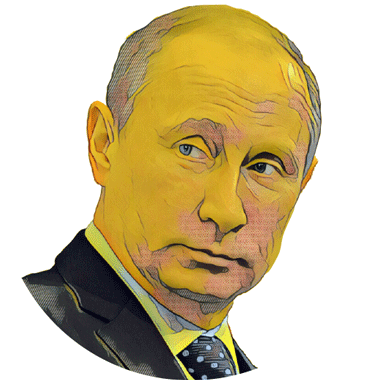
India’s post-Cold War foreign policy consensus shifted to a more balanced relationship with the U.S. The breakup of the former Soviet Union made it inevitable that the only remaining superpower had to be engaged at a level that had not been engaged by India before. Although the change was uncomfortable, especially for entrenched foreign policy bureaucrats who had spent their professional lives nurturing India’s special friendship with the former Soviet Union, scholars and policymakers slowly began to articulate the natural partnership of the world’s two largest democracies, underlining shared values and global goals. There was an alignment of U.S. and Indian interests in regional and global matters—for instance, the containment of China—to a level that had not happened before. Somewhere along the way, India’s relationship with its old ally Russia drifted, and has continued to drift until very recently, when in 2016 Putin made a visit to India and reminded India about its “oldest friend.”
Significantly, up until the post-Cold War era, through these shifts, India aimed at a foreign policy that placed the highest store on caution and balance.
Millennial Foreign Policy
Only now, with the articulation of
the millennial foreign policy, is India becoming
more assertive. The old parameters
have shifted and a new world view
is being expressed by India. This shift
started with the Congress government
of Manmohan Singh, but has sharpened
and intensified under the Modi
government. The tenor of foreign policy
has gone from stability and balance to
assertion and taking a global lead.
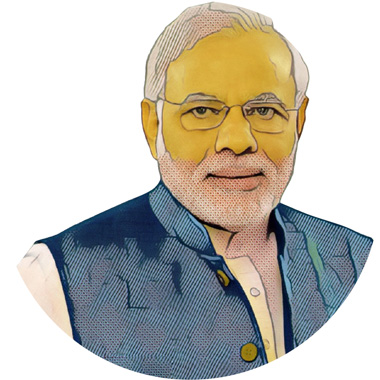
Modi’s coming into office has coincided with the culmination of a dramatic shift in the neoliberal world order. Many of the old givens have changed. The long, unquestioned postwar dominance of the U.S. and the West in global politics and economics has been shaken as Asian powers registered enviable rates of growth that left the West far behind. Other emerging powers like Turkey have asserted their place in the world economy and global scene. Long-term economic stagnation in the West and globalization’s shift of economic momentum and dynamism to the East has led to a questioning by the “losers” in the West of the value of the old order itself—Donald Trump’s victory owes something to this shifting paradigm. It would appear that to some extent, it is Asia that might take the lead in maintaining this new world order, embracing and championing continued globalization and economic integration. India, a beneficiary of the last two decades of globalization, with average growth rates of around 8 percent, certainly has a stake in keeping intact some of its key parameters. This it will do as the profile and confidence of the West declines further as the century unfolds.
The Modi foreign policy has exhibited new markers that distinguish it from its precedents. Besides greater assertion of India’s value to the world in keeping the world safe and prosperous, he has clearly articulated some links with new economic initiatives in the domestic sphere. The most evident of these would be the widespread economic reforms and good governance agenda on which the Modi government got elected. For India’s new foreign policy to succeed, its new assertiveness has to be backed up by wins on India’s economic front. An anemic economic power will not be taken seriously on the world stage, Modi believes. Its new assertiveness with China and Pakistan is therefore balanced by Modi’s sweeping efforts to shore up good relations and trade with Asian countries to an extent that was never attempted by the previous Congress government. And this ties in with Modi’s belief in domestic-foreign policy interlinkages stemming from his Gujarat Chief Minister days, when he touted Gujarat’s economic projects directly to foreign heads of state like Japan’s Shinzo Abe. As Prime Minister, he has extended this policy to the national “Make in India” policy, where India is sold to the world as newly conducive and open to foreign business and manufacturing.
More importantly, the Modi Asia policy is a coherent and determined one that sees an effort to befriend Asian countries as crucially important in containing China. This is different from India’s previous foreign policy iterations that valued Asia, but not as strategically and effectively as Modi has done. Perhaps as it became clearer that Asians would need to take greater control of their own relationships and destinies on the continent as U.S. and Western power recedes, India’s Asia policy has taken clearer shape. In East Asia, the decades-old Look East policy is being rearticulated as an Act East policy, one where the countries take a more active approach in building ties. In South Asia, Modi has made it clear that this region is of critical importance to India’s well-being. His efforts at improving ties with neighboring countries was immediately dubbed the “neighborhood first” policy. In light of China’s development of key ports in countries in India’s neighborhood, including Pakistan, Bangladesh, Sri Lanka, and in the Indian Ocean region, this policy is seen as highly necessary for India’s security.
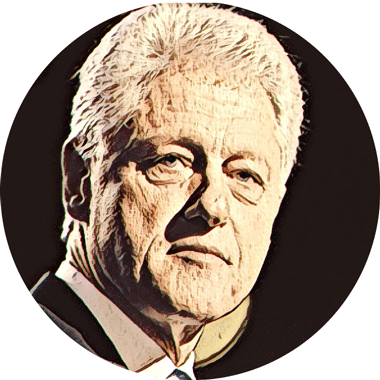
Millennial Indo-U.S.
Relationship
India’s relations with the U.S. have changed dramatically from the Cold War days. From the strengthening of relations after Bill Clinton’s 2000 visit to India, to the signing of the Civil Nuclear Development Cooperation Initiative
under the George Bush administration in 2005, through the continued warmth of Manmohan Singh’s 2009 visit as President Obama’s inaugural state guest, through Obama’s backing of India’s
long-held bid for a permanent seat on the Security Council, to Modi’s 2014 visit to the U.S. and historic meeting with Obama, India and the U.S. have maintained and strengthened a mutually important relationship now for two decades. It is significant that the U.S., which had rejected a visa for Modi in 2005
after the Gujarat carnage, swiftly and diplomatically extended both an invitation and visa as soon as he became
Prime Minister. Washington understood that India’s democratically held elections had yielded a new government and
that any lectures would have been destructive to an increasingly important and well-cultivated relationship. It further underscored that America had ceased to be the world’s policeman or muscleman and that India had gained much power in the interim. For his part, Modi accepted the invitation with grace and alacrity, relegating the insult to the past. He visited the U.S. twice in quick succession, in 2014 and 2015, and received unprecedented access to business and political leaders. President Obama visited India twice, further underlining the importance of the relationship to the U.S.

Both countries are now routinely talking about the special nature of the relationship between the world’s two largest democracies—and now meaning it. In the understanding and imagination of the average Indian, the U.S., with its now-large Indian diaspora, has evolved from a Cold War bogeyman to a sympathetic ally where over 3 million fellow Indians or persons of Indian origin reside and prosper. The relationship has developed vast tentacles, moving from trade and the civil nuclear cooperation, to encompass science and technology, cybersecurity, education, and environmental issues. In addition, high-level delegations such as the one led by Secretary of State Kerry in 2015 are now commonplace. Even if you consider just the growth on the trade front, a relationship that had a total of about $6 billion in trade in 1990 has evolved to one that is worth over $67 billion today.
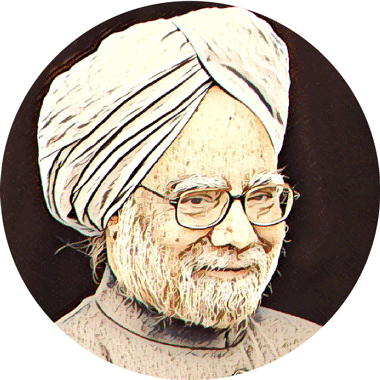
Many mechanisms have now been built into the relationship to ensure stability and growth in different aspects and sectors. For instance, there are dialogue mechanisms to move along issues in trade, security, and investment. When Modi visited in 2014, an India-U.S. Investment initiative was established, with focuses on FDI, portfolio investment, etc. (https://www.mea.gov.in/Portal/ForeignRelation/USA_15_01_2016.pdf)
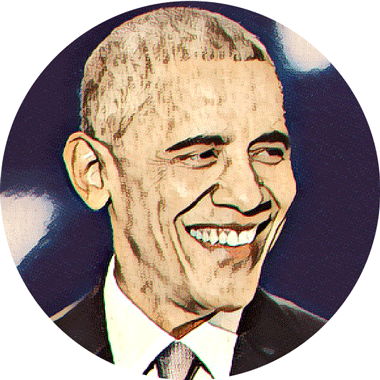
There are dialogues set up for energy and climate change issues and the education sphere. As an academic, I have seen firsthand that the U.S.-India relationship has blossomed in the higher education arena. The Fulbright program was renewed with vigor for India in 2008, with a larger mandate and, for the first time, joint funding from the Indian government. Fueled by Indian government funding, there are about 65 additional scholars and teachers who can travel to do research in India through the Fulbright-Nehru program. This is a clear example of India finally employing government funds to exert soft power in the world, something that the Japanese government, with its generous funding of myriad programs that assist U.S. and Japanese scholars to study and research in each other’s countries, has done with great success for decades. This is a reflection of an assertive, confident India.
At the global level, American and Indian interests are aligned to an extent not seen before. In the Middle East and Persian Gulf region, both countries seek to counter terrorism and promote stability, not least for India because of the substantial Indian diaspora working in that region, and the fact that both countries have experienced the horror of terrorist acts on their home soil. In South Asia, the U.S. supports India’s efforts to counter China’s influence in neighboring countries. The Obama administration’s “Pivot to Asia” policy thus dovetails nicely with Modi’s “Act East” and “Neighborhood First” policies.
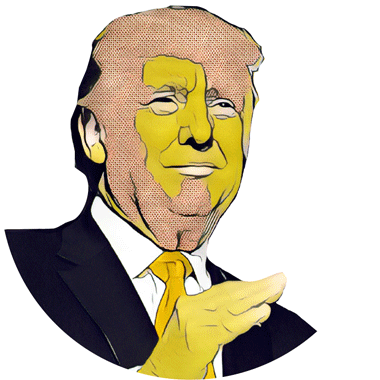
Relations in the Trump Era
Just when continuity and strength have both been cemented in the U.S.-India relationship, we have the election of Donald Trump in 2016. It is interesting to speculate if there will be any dramatic changes as a result of his presidency, and although it is, of course, very early to make any predictions, there are signs that the U.S.-India relationship is not one that will undergo significant change.
Many have already written about the commonalities that brought Modi and Trump to power in both countries. Their nationalistic agendas, their backing by an aggrieved majority, their economic nationalism find echoes in each other’s trajectories to the top. Each leader seems to understand this about the other, as do their supporters. In the U.S., Trump received support from some American Hindus who formed a group called Hindus for Trump. Core Republican and Trumpian economic values of lower taxes, fewer regulations, and support for small business naturally echoed with Indians, but the special support from Hindus is notable. It is also the first time in my memory that any president or presidential candidate singled out Hindu Americans rather than Indian Americans to the extent that Trump did. For better or for worse, this resonates in a Modified India where religious identity is now tied up with nationalist identity.
Both Modi and Trump have already said flattering things about each other. But one can’t put too much store by this, since Trump has said equally flattering things about Pakistani Prime Minister Sharif. Unverified accounts made public by the Pakistani state have stated that Trump talked about the “fantastic” country of Pakistan (one that he had sharply censured only a few years ago) and offered to help in any way in “outstanding issues.” One doesn’t know the veracity of this, but it seems an effusive conversation to have with the leader of a country that has troubled ties and ongoing issues, not the least of which is Kashmir, with India.
In the economic sphere, trade has flourished in the last two decades and has helped to propel relations between the two countries to their highest levels since India’s independence. We don’t know yet what Trump’s focus on economic protectionism and caution against outsourcing of jobs will mean for the U.S.-India relationship. Indeed, during the campaign, when Trump railed against American jobs going to Mexico, he might have easily said the same of India. When he warned against a flood of immigration from south of the border, Indian immigration, which has significantly increased in the last two decades, could also have been the target. A significant part of the Indian immigration to the U.S. is in the form of Indians coming on H1 visas to do technology jobs. Trump has strongly stated that these jobs need to be filled with American workers.
At the time of writing, it is rumored that Ashley Tellis will be nominated as U.S. ambassador to India. Tellis has a solid international relations background, having built his professional life at the Wilson Center and the Carnegie Endowment for International Peace, among other think tanks. Tellis, in a speech at his alma mater, St. Xavier’s College – Mumbai, ruffled some feathers by delivering a deeply analytical speech with qualifications on India’s eventual success, rather than a fawning pro-India speech. At the same time, Tellis is tough on the U.S., too, believing that Trump should cultivate India carefully as a counter to China and not take the relationship with India for granted. As a scholar of Indian foreign policy, he will come to the position with an unprecedented ability to scrutinize, analyze, and understand India’s behavior should he be named ambassador.
In conclusion, then, India is poised to continue to articulate its assertive millennial foreign policy in Asia, with the West and with the U.S. Just how assertive a role it wishes to claim in the world will depend on its continued economic success, domestic stability, and positioning vis-à-vis the rest of the world’s actors and powers. It is still beset by myriad problems of enduring poverty, inequality, infrastructural breakdown, and healthcare challenges. Yet it has propelled large portions of its population out of destitution and into gainful futures. If India can go from strength to strength in the domestic realm, its foreign policy power will increase accordingly and it will have the strength to negotiate its bilateral relationships from a position of confidence.

Tinaz Pavri is Professor of Political Science and Director of the Asian Studies Program at Spelman College, Atlanta. A recipient of the Donald Wells Award from the Georgia Political Science Association, she’s the author of the memoir Bombay in the Age of Disco: City, Community, Life.
Website Bonus Feature
Audio Interview on NPR/WABE's A Closer Look with Rose Scott and Jim Burress :
Date: Thursday, March 23, 2017
Time: 1pm
Venue: NPR/WABE 90.1 FM
Here is the link for the audio of the interview:
"Closer Look: Recess Bill; Temple Grandin; And More"
By FENLY FOXEN
Thursday, March 23, 2017
...at 1:52: Tinaz Pavri, political scientist at Spelman College, and Hashim Gibrill, political science professor at Clark Atlanta University, speaks about common threads that helped President Donald Trump, Indian Prime Minister Narendra Modi, and other world leaders win elections...
http://news.wabe.org/post/closer-look-recess-bill-temple-grandin-and-more
Enjoyed reading Khabar magazine? Subscribe to Khabar and get a full digital copy of this Indian-American community magazine.
blog comments powered by Disqus




